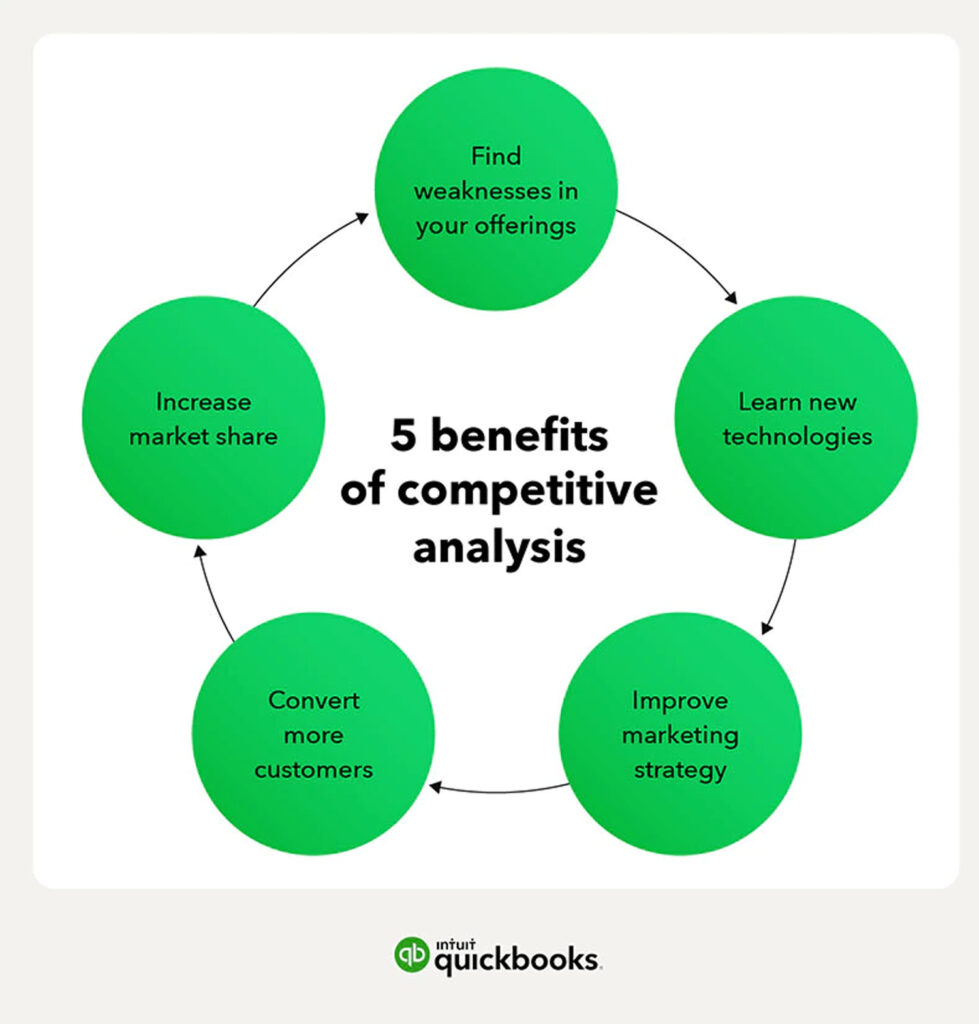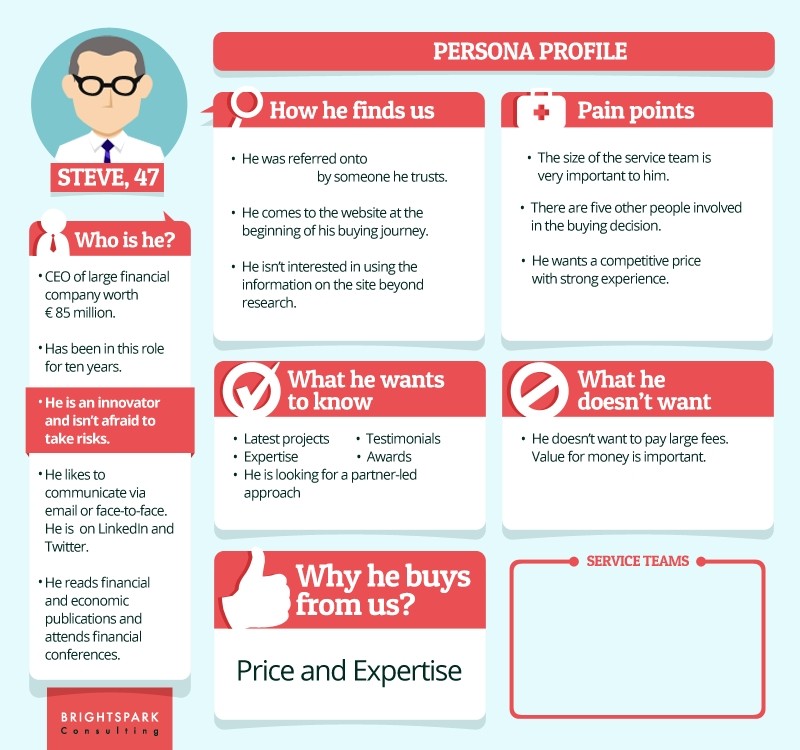As a manufacturer, you must have a solid understanding of who your competitors are and what they’re doing to outperform them. An effective way to do this is through a competitive analysis in manufacturing.
There are currently over 718,000 manufacturing companies in the United States. That’s a lot of businesses competing for the same clientele. To set yourself apart from the competition and see which of your efforts are working effectively, it’s important to assess other companies in your industry.
Learn what your competition is doing to succeed and in what areas there may be a gap you can fill. A competitive analysis is key to helping you keep pace with (if not surpass) your competitors and drive more business your way.
Keep reading to learn how to effectively perform a competitive analysis in manufacturing.
Key Takeaways
- A competitive analysis is an assessment of your competition and their products, approaches, and marketing strategies.
- Performing a competitive analysis can help you identify unfulfilled needs, inspire product development, and help flatten the learning curve for your methods and tactics.
- Conduct a competitive analysis by identifying your competitors, comparing your products and services to those of your competition, and performing a self-analysis.
What Exactly Is a Competitive Analysis?
A competitive analysis is an assessment of your competition. It’s the process of identifying the companies in your industry that are vying for the attention of your target audience, selling similar goods and services, and marketing for manufacturers. Competitive analysis helps you see what others in your industry are doing to succeed. Their results can help you:
- Gain a better understanding of your audience’s needs
- Learn what approaches work well for companies in your market
- See what efforts are ineffective for your customer base
- Identify areas your business could succeed where others have not
- Recognize and capitalize on marketing trends for manufacturing companies
All of this information can help shape your marketing, sales, and business approaches for maximum efficacy.

3 Main Benefits Of Competitive Analysis
Through a competitive analysis in manufacturing, you can gain invaluable insights that can shape your overall business model. Competitive analysis can benefit your company in three major ways.
1. Identify Unfulfilled Needs
When you realize your competitors are falling short in certain areas through competitive analysis, you have found an unfulfilled need your manufacturing company could meet. Buyers shop for solutions to their problems. If they’re not finding what they need, they’ll keep looking until they find a company that solves their market need.
Pick up where your competitors are leaving off and find ways to solve the problems of your customer base for more sales, revenue, and a loyal following.
2. Spark Product Development
Finding a solution to consumers’ problems could involve product development. In realizing there’s a need that no other companies are filling, you may see an opportunity to create a new product line or a variation of an existing product to meet your buyers’ needs. Sometimes great innovation comes from necessity, and this could be the boost you need to develop your best-selling products.
3. Flatten the Learning Curve
It takes time to research your audience, analyze your sales and marketing efforts, and develop the perfect products through trial and error. Learning from the mistakes and experiences of others helps to flatten the learning curve and reach answers and solutions more quickly and efficiently.
There’s no need to reinvent the wheel. If something is working well for a competitor, you might try it yourself. If a tactic isn’t working, don’t spin your wheels trying the same approach. Observe the businesses around you, their results, and adjust your strategy accordingly.
4 Steps Of Competitive Analysis in Manufacturing
The beauty of competitive analysis is that you can take whatever approach is most effective for your business. Regardless of the aspect of your competitors’ business you want to assess, most competitive analyses follow these four steps.
Step 1: Identify Your Competitors
To gain a broad understanding of what your competition is doing, you must first determine which companies are your competitors. Sampling five to 10 businesses will give you a good idea of your competition. For best results, choose a variety of businesses ranging in size and longevity. Consider brands that offer solutions like yours and cater to similar markets. These likenesses will help you better identify your areas of success and improvement.
Step 2: Conduct Research
Market research helps you gain insights that can shape your efforts. Begin with audience research to identify your target audience. Look at demographics, interests, and needs. Create buyer personas to help identify your ideal customer. This information is important in developing brand marketing for manufacturing companies.

Focus groups, customer surveys, and polls are powerful tools for learning what customers want. Put yourself in the customer’s shoes and purchase a product from a competitor to experience the entire customer journey. What could you improve upon to deliver a more positive B2B customer experience?
Read customer reviews on competitor websites. Peruse social media platforms and monitor chat threads and forums to see what candid feedback people leave about your competitors and your company. Look for common concerns and complaints and find ways to solve those problems.
Step 3: Compare Products and Marketing
Examine your products side by side with those of your competitors. Look at features, functionality, source, and price. Then, see what those businesses do to promote their products.
What marketing approach do they use? How do consumers seem to respond?
Explore everything from press releases and media coverage to social media and email campaigns. Notice the language they use and their brand tone of voice. What kind of engagement do they get from their audience, and can you achieve the same (or better) results?
Step 4: Analyze Your Business
Finally, it’s time to examine your own company and products closely. Identify your strengths and weaknesses. Realize what areas you do better than your competitors and adjustments you could make to improve any shortcomings. Identify opportunities for new products or customer development that you hadn’t previously thought about. Consider potential threats.
This SWOT analysis enables you to use all the information you’ve gained from your competitors and what you’ve learned about yourself to shape a business strategy that pulls you ahead of your competition. Learn more about SWOT in the following video:
Source: Learn With Shopify on YouTube
Use Competitive Analysis to Shape Your Efforts
Shanahan Strategy is an industrial marketing agency that helps manufacturing companies develop effective digital marketing strategies to connect with their audience and generate revenue.
Ready to get ahead of your competition? Contact Shanahan Strategy today to learn how we can help you conduct a beneficial competitive analysis.

